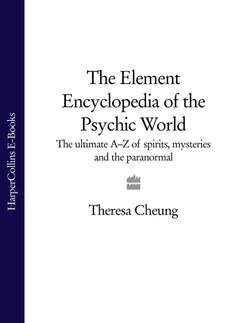Читать книгу The Element Encyclopedia of the Psychic World: The Ultimate A–Z of Spirits, Mysteries and the Paranormal - Theresa Cheung, Theresa Cheung - Страница 93
BANSHEE
ОглавлениеIn the words of the Irish playwright and poet, and expert in Irish folklore, William Butler Yeats:
The banshee (from ban [bean], a woman, and shee [sidhe, a fairie]) is an attendant fairy that follows the old families, and none but them, and wails before a death. Many have seen her as she goes wailing and clapping her hands. The keen (caoine), the funeral cry of the peasantry, is said to be an imitation of her cry. When more than one banshee is present, and they wail and sing in chorus, it is for the death of some holy or great one. An omen that sometimes accompanies the banshee is the coach-a-bower (cóiste-bodhar) - an immense black coach, mounted by a coffin, and drawn by headless horses driven by a Dullahan. It will go rumbling to your door, and if you open it … a basin of blood will be thrown in your face. These headless phantoms are found elsewhere than in Ireland. In 1807 two of the sentries stationed outside St. James’s Park died of fright. A headless woman, the upper part of her body naked, used to pass at midnight and scale the railings. After a time the sentries were stationed no longer at the haunted spot. In Norway the heads of corpses were cut off to make their ghosts feeble. Thus came into existence the Dullahans, perhaps; unless, indeed, they are descended from that Irish giant who swam across the Channel with his head in his teeth. (From A Treasury of Irish Myth, Legend, and Folklore, ed. W B Yeats.)
In Irish and Scottish folklore the banshee is believed to be a death omen who attaches herself to families, usually those whose surnames begin with Mac. Thought to be the spirit of a young woman who died in childbirth, she strikes terror into the hearts of those who encounter her as she only manifests when there is to be a death in the family.
There are variations in the way she appears. According to Irish lore the banshee is known as Bean Si and is a beautiful young woman with long, flowing hair, wearing a grey cloak over a white, red or green dress. Her eyes are always red and sore from crying. In both Scottish and Irish lore she is also known as Bean Nighe or little washer by the ford’. The Bean Nighe is thought to signal an imminent death by washing bloodstained clothes in a stream but, unlike the Bean Si, who is beautiful, the Bean Nighe is evil and ugly, with just one nostril, buck teeth, pendulous breasts and red webbed feet.
A few banshee stories entered into American folklore with the arrival of immigrants. One of them comes from the American South, where a crying banshee with long flowing yellow hair is thought to haunt the Tar River in Edgecomb County, North Carolina.
